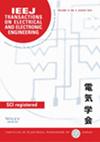求助PDF
{"title":"AENet:基于注意机制和特征聚合的哈萨克手写文档图像检索","authors":"Gang Chen, Xuebin Xu, Jiaoyan Wang, Hornisa Mamat, Kurban Ubul","doi":"10.1002/tee.24122","DOIUrl":null,"url":null,"abstract":"<p>Kazakh is one of the multilingual languages of China and is widely spoken in some areas of Xinjiang, China. However, due to the fact that Kazakh is a language in which several characters are glued together to form a continuous word with a unique shape and complex structural combinations of relationships. This paper explores a solution for offline image retrieval of handwritten Kazakh words, which is a challenging task because, due to the lack of relevant datasets and the special writing morphology of the Kazakh language, traditional text image retrieval algorithms often struggle to achieve satisfactory results when dealing with writing styles that are varied and adherent to the language. Therefore, a dataset of offline Kazakh handwritten document images was created in this paper. The dataset contains 300 pages of document images with 20 500 words. Then, a new model called the ‘AENet’ is proposed. The model utilizes an attention mechanism to focus more finely on focal regions such as centers, inflection points, and contours of handwritten word images and to capture important local features from different scales. Fusion space pyramid pooling, feature aggregation, encoding operations, and feature downscaling and reconstruction are used to extract and reconstruct more representative feature representations from local to global to capture the overall information in the word images. Through experimental evaluation on Kazak-80, Zilla-64, and HWDB1.1-375 datasets, it is verified that the method significantly improves the mAP for image retrieval of handwritten words, which is especially applicable to adhesive languages like Kazakh. © 2024 Institute of Electrical Engineers of Japan and Wiley Periodicals LLC.</p>","PeriodicalId":13435,"journal":{"name":"IEEJ Transactions on Electrical and Electronic Engineering","volume":"19 10","pages":"1640-1651"},"PeriodicalIF":1.0000,"publicationDate":"2024-07-02","publicationTypes":"Journal Article","fieldsOfStudy":null,"isOpenAccess":false,"openAccessPdf":"","citationCount":"0","resultStr":"{\"title\":\"AENet: Image Retrieval of Kazakh Handwritten Documents Based on Attention Mechanism and Feature Aggregation\",\"authors\":\"Gang Chen, Xuebin Xu, Jiaoyan Wang, Hornisa Mamat, Kurban Ubul\",\"doi\":\"10.1002/tee.24122\",\"DOIUrl\":null,\"url\":null,\"abstract\":\"<p>Kazakh is one of the multilingual languages of China and is widely spoken in some areas of Xinjiang, China. However, due to the fact that Kazakh is a language in which several characters are glued together to form a continuous word with a unique shape and complex structural combinations of relationships. This paper explores a solution for offline image retrieval of handwritten Kazakh words, which is a challenging task because, due to the lack of relevant datasets and the special writing morphology of the Kazakh language, traditional text image retrieval algorithms often struggle to achieve satisfactory results when dealing with writing styles that are varied and adherent to the language. Therefore, a dataset of offline Kazakh handwritten document images was created in this paper. The dataset contains 300 pages of document images with 20 500 words. Then, a new model called the ‘AENet’ is proposed. The model utilizes an attention mechanism to focus more finely on focal regions such as centers, inflection points, and contours of handwritten word images and to capture important local features from different scales. Fusion space pyramid pooling, feature aggregation, encoding operations, and feature downscaling and reconstruction are used to extract and reconstruct more representative feature representations from local to global to capture the overall information in the word images. Through experimental evaluation on Kazak-80, Zilla-64, and HWDB1.1-375 datasets, it is verified that the method significantly improves the mAP for image retrieval of handwritten words, which is especially applicable to adhesive languages like Kazakh. © 2024 Institute of Electrical Engineers of Japan and Wiley Periodicals LLC.</p>\",\"PeriodicalId\":13435,\"journal\":{\"name\":\"IEEJ Transactions on Electrical and Electronic Engineering\",\"volume\":\"19 10\",\"pages\":\"1640-1651\"},\"PeriodicalIF\":1.0000,\"publicationDate\":\"2024-07-02\",\"publicationTypes\":\"Journal Article\",\"fieldsOfStudy\":null,\"isOpenAccess\":false,\"openAccessPdf\":\"\",\"citationCount\":\"0\",\"resultStr\":null,\"platform\":\"Semanticscholar\",\"paperid\":null,\"PeriodicalName\":\"IEEJ Transactions on Electrical and Electronic Engineering\",\"FirstCategoryId\":\"5\",\"ListUrlMain\":\"https://onlinelibrary.wiley.com/doi/10.1002/tee.24122\",\"RegionNum\":4,\"RegionCategory\":\"工程技术\",\"ArticlePicture\":[],\"TitleCN\":null,\"AbstractTextCN\":null,\"PMCID\":null,\"EPubDate\":\"\",\"PubModel\":\"\",\"JCR\":\"Q4\",\"JCRName\":\"ENGINEERING, ELECTRICAL & ELECTRONIC\",\"Score\":null,\"Total\":0}","platform":"Semanticscholar","paperid":null,"PeriodicalName":"IEEJ Transactions on Electrical and Electronic Engineering","FirstCategoryId":"5","ListUrlMain":"https://onlinelibrary.wiley.com/doi/10.1002/tee.24122","RegionNum":4,"RegionCategory":"工程技术","ArticlePicture":[],"TitleCN":null,"AbstractTextCN":null,"PMCID":null,"EPubDate":"","PubModel":"","JCR":"Q4","JCRName":"ENGINEERING, ELECTRICAL & ELECTRONIC","Score":null,"Total":0}
引用次数: 0
引用
批量引用

 求助内容:
求助内容: 应助结果提醒方式:
应助结果提醒方式:


